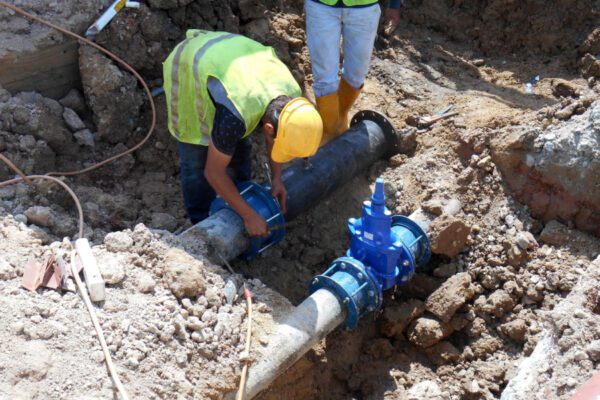As underground utility, water/sewer, and excavation contractors in the utilities and telecommunications industry, you are responsible for installing the infrastructure that supports the communication and energy needs of the country.
This includes underground pipelines, cables, and other important assets that require specialized skills, equipment, and knowledge to install safely and efficiently. However, the nature of this work also exposes you to a range of potential hazards that can pose a risk to your workers, the public, and the environment.
To mitigate these risks and ensure that your operations are conducted safely and efficiently, it’s essential to conduct regular risk assessments to identify potential hazards and implement appropriate controls. Here’s why:
- Compliance with regulations and standards: The utilities and telecommunications industry is subject to a range of regulations and standards that aim to protect workers, the public, and the environment. By conducting regular risk assessments, you can identify and address any non-compliant practices, procedures, or equipment before they cause harm. This helps you maintain compliance with regulations and standards, minimize the risk of legal action, and protect your reputation.
- Improved safety and health outcomes: One of the primary objectives of conducting regular risk assessments is to identify and address potential safety and health hazards in the workplace. This includes identifying risks associated with the use of heavy machinery, excavation, and drilling, as well as potential exposure to hazardous substances or working in confined spaces. By taking appropriate controls to mitigate these risks, you can reduce the risk of injury, illness, or death to your workers and protect the public.
- Increased efficiency and productivity: Conducting regular risk assessments can also help you identify ways to improve the efficiency and productivity of your operations. For example, by identifying and addressing potential safety hazards, you can reduce the risk of costly incidents and delays, and increase the reliability and longevity of your equipment. Additionally, by identifying and addressing inefficiencies in your procedures or processes, you can streamline your operations and reduce waste, leading to improved efficiency and productivity.
- Better risk management and planning: Conducting regular risk assessments can help you build a better understanding of the risks associated with your operations, allowing you to develop more effective risk management strategies and contingency plans. This can help you respond quickly and effectively to potential incidents and reduce the impact of any adverse events.
How to Conduct a Risk Assessment
To conduct a risk assessment, you will need to follow a systematic process that includes the following steps:
- Identify the hazards: The first step in conducting a risk assessment is to identify the potential hazards associated with your operations. This includes identifying hazards associated with the use of heavy machinery, excavation, drilling, and working in confined spaces, as well as potential exposure to hazardous substances.
- Evaluate the risks: Once you have identified the hazards, you need to evaluate the risks associated with each hazard. This includes considering the likelihood of the hazard occurring and the potential consequences if it does. This step will help you prioritize the risks and determine the level of control required to mitigate each risk.
- Implement controls: Based on your evaluation of the risks, you will need to implement appropriate controls to mitigate each risk. This may include providing appropriate training, implementing safe work procedures, using personal protective equipment, or modifying the design of your equipment or processes.
- Monitor and review: Regular monitoring and review of your risk assessments and controls are essential to ensure that they remain effective over time. This may include updating your risk assessments in response to changes in your operations or new regulations, or conducting regular audits or inspections to ensure that your controls are working as intended.
Interested in learning about Horton’s risk evaluation process?
Material posted on this website is for informational purposes only and does not constitute a legal opinion or medical advice. Contact your legal representative or medical professional for information specific to your legal or medical needs.





